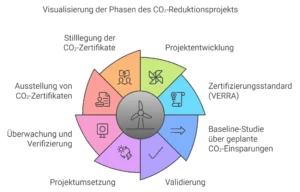When we think about plastic consumption, we quickly realize how deeply rooted it is in our everyday life. From the packaging of our food to the products we use daily, plastic is ubiquitous. To reduce our plastic consumption, we can make conscious decisions.
For example, when shopping, we can look for unpackaged products or bring our own containers to buy fresh food. Giving up disposable items like plastic bags, straws, and water bottles can also make a significant difference. By choosing sustainable alternatives, we actively contribute to reducing the amount of plastic waste that ends up in our oceans and landfills.
Another important step in reducing our plastic consumption is raising awareness about the environmental impact of plastic. We should educate ourselves on how plastic is made and the consequences it has for wildlife and our health. By sharing our knowledge and encouraging others to reduce their plastic consumption as well, we can create a community that is committed to a plastic-free future.
It’s important that we support and inspire each other to develop sustainable habits and maintain them in the long run.
Key Takeaways
- Use reusable products to reduce your plastic consumption.
- Shop locally and seasonally to reduce the environmental impact of transportation.
- Avoid food waste by shopping more mindfully and using leftovers effectively.
- Use public transportation or a bicycle instead of a car to reduce your CO2 emissions.
- Reduce your energy consumption by using resources consciously and relying on renewable energy.
Buy Locally and Seasonally
Buying local and seasonal food not only has a positive impact on our health but also on the environment. When we choose products grown in our region, we reduce the CO2 emissions associated with transporting food over long distances. Additionally, we support local farmers and strengthen the economy of our community.
By choosing seasonal products, we enjoy fresher and tastier food while helping promote biodiversity and minimizing the use of pesticides and fertilizers. Furthermore, buying local products helps us develop an awareness of the seasonal rhythms of nature. We learn which fruits and vegetables are available at what time of year and appreciate the variety of the harvest.
This can inspire us to try new recipes and diversify our diets. By actively choosing local and seasonal products, we make a valuable contribution to environmental protection and promote a healthy lifestyle.
Avoid Food Waste
Food waste is a serious issue that not only raises ethical questions but also has significant environmental impacts. Every year, millions of tons of food are thrown away while many people suffer from hunger. To avoid food waste, we should be more mindful of our shopping habits.
Good meal planning can help ensure we buy only the necessary amounts and use leftovers wisely. We can also find creative ways to use leftover food instead of throwing it away. Another important aspect is understanding expiration dates.
Often, we throw away food simply because the “best before” date has passed. However, many products are still edible after that date. By learning to trust our senses—smell, appearance, and taste—we can better assess whether food is still good or not.
This mindfulness not only saves us money but also makes a valuable contribution to reducing food waste.
Use Public Transport or Bicycles Instead of a Car
| Transport Means | Benefits | Drawbacks |
|---|---|---|
| Public Transport | You can avoid traffic jams. | Timetables can sometimes be unreliable. |
| Bicycle | You are traveling eco-friendly. | Riding is unpleasant in bad weather. |
The way we move around has a significant impact on our environment. Using public transportation or riding a bicycle instead of driving a car can help reduce CO2 emissions considerably. By choosing buses or trains, we not only reduce our own ecological footprint but also contribute to easing traffic congestion.
Additionally, public transport is often a more cost-effective alternative to driving, especially when you factor in the costs of fuel and parking. Cycling also offers numerous health benefits. It promotes fitness and can help reduce stress.
By regularly cycling to work or for shopping, we incorporate physical activity into our daily lives and improve our overall well-being. Furthermore, by cycling, we actively protect the environment and set an example for sustainable mobility. By choosing eco-friendly means of transport, we also inspire others to follow suit.
Use Reusable Products
In a world full of disposable products, it is important to switch to reusable alternatives. Whether it’s water bottles, shopping bags, or food containers—reusable products are not only more environmentally friendly but also often more durable and cost-effective. By integrating reusable items into our daily lives, we reduce the need for single-use plastic and actively contribute to waste reduction.
These small changes can make a big difference over time. Furthermore, reusable products can also raise our awareness of consumer behavior. By consciously choosing quality over quantity and opting for durable products, we learn to live more sustainably.
We develop a better understanding of which materials are environmentally friendly and what impact our consumption has on the planet. By using reusable products and encouraging others to do the same, we create a culture of responsible consumption.
Reduce Your Energy Consumption
Reducing our energy consumption is a crucial step toward a more sustainable lifestyle. We can achieve this by implementing simple measures in our everyday life. This includes turning off lights in rooms not in use or using energy-efficient appliances.
Lowering the heating temperature by a few degrees can also have a significant impact on our energy consumption. By being more conscious with our energy use, we not only contribute to climate protection but also save money. Another important aspect is using renewable energy sources.
If possible, we should opt for green electricity or even invest in our own solar panels. These measures help reduce the share of fossil fuels in our energy use and promote a sustainable energy future. By actively engaging with our energy consumption and looking for ways to lower or switch it, we make a valuable contribution to protecting our environment.
Support Businesses with Sustainable Practices
Supporting businesses with sustainable practices is another important step toward a more eco-friendly future. By consciously shopping with companies that are committed to ecological responsibility—whether through fair labor practices or environmentally friendly production methods—we help these businesses grow and evolve. By spending our money where it has a positive impact, we promote a sustainability-focused economy.
Furthermore, through our purchasing behavior, we can encourage other businesses to adopt sustainable practices. As more consumers prioritize environmental friendliness, the pressure on companies to rethink their production methods and act more eco-consciously will increase. By actively choosing sustainable brands and supporting them, we contribute to creating positive change in the economy.
Engage in Environmental Protection Projects in Your Community
Getting involved in environmental protection projects in our community is an excellent way to actively contribute to improving our environment. Whether it’s reforestation efforts or trash collection events in parks and beaches—every little action counts. Through our engagement, we can not only have a direct impact on our surroundings but also inspire and mobilize others.
Together, we can raise awareness for environmental issues and show that every individual can make a difference. Moreover, participating in such projects provides an opportunity to connect with like-minded people. We meet individuals who share similar values and are also committed to protecting our planet.
This community can provide valuable support and motivate us to stay active. By engaging in environmental protection projects and raising our voice, we help secure a sustainable future for future generations.
If you’re interested in sustainability and want to take concrete steps to reduce your carbon footprint, I recommend reading the article The 3 Steps to Carbon Neutrality. This article describes practical actions you can take to make your daily life more eco-friendly. It’s a great resource to understand how simple changes can have a positive impact on the environment.



